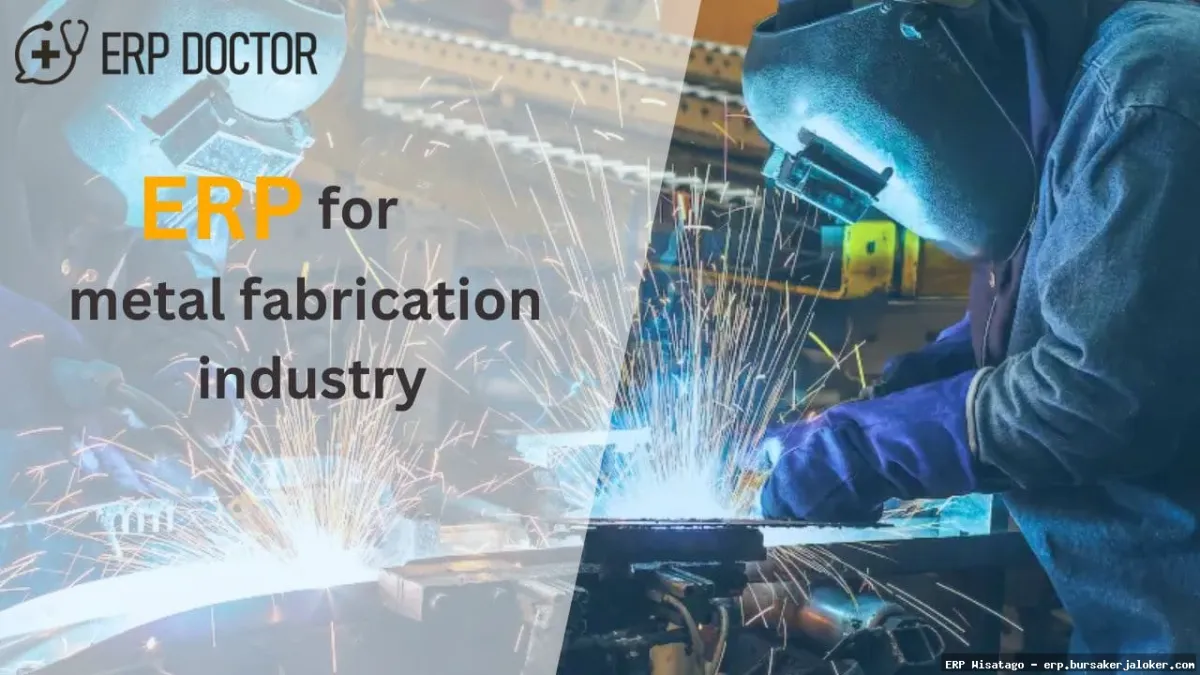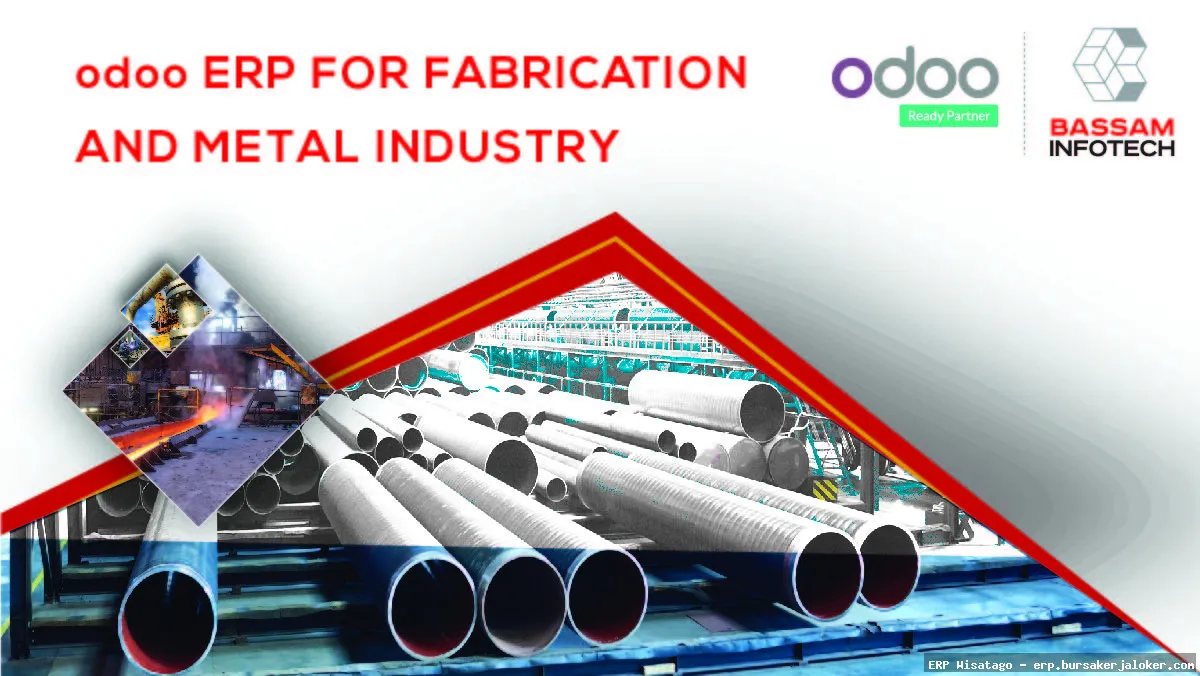The metal industry, a cornerstone of manufacturing and construction, faces unique challenges. From managing volatile material costs and complex supply chains to optimizing production schedules and meeting stringent quality standards, metal businesses operate in a dynamic and demanding environment. Traditional methods, spreadsheets, and disparate systems often fall short, leading to inefficiencies, errors, and ultimately, reduced profitability. That’s where Enterprise Resource Planning (ERP) systems come into play, offering a comprehensive solution to streamline operations, improve decision-making, and drive growth.
Having been involved in several ERP implementations across various industries, including metal manufacturing, I’ve seen firsthand the transformative power of a well-chosen and properly implemented ERP system. However, I’ve also witnessed the pitfalls of selecting the wrong system or failing to adequately prepare for the transition. The key is understanding the specific needs of the metal industry, carefully evaluating available ERP solutions, and embracing a strategic approach to implementation. This article serves as a complete guide to ERP for the metal industry, covering essential features, implementation considerations, and key benefits to help you navigate this complex landscape.

This guide will delve into the core functionalities of ERP systems tailored for the metal industry, highlighting how they address specific challenges such as inventory management of raw materials like steel and aluminum, production planning and scheduling for complex fabrication processes, quality control and traceability to meet industry standards, and financial management to control costs and improve profitability. We’ll also discuss the importance of integration with other systems, such as CAD/CAM software and CRM platforms, to create a seamless flow of information across the organization. By the end of this article, you’ll have a solid understanding of how ERP can revolutionize your metal business and equip you to make informed decisions about ERP adoption.
What is ERP and Why is it Important for the Metal Industry?
Enterprise Resource Planning (ERP) is a comprehensive software system that integrates all facets of a business, including planning, manufacturing, sales, marketing, finance, human resources, and supply chain management. It acts as a central nervous system, providing a unified platform for managing data, automating processes, and improving collaboration across departments. For the metal industry, this integration is crucial for addressing the unique complexities and challenges inherent in the business.
Addressing the Specific Challenges of the Metal Industry
The metal industry faces a range of challenges that ERP systems are specifically designed to address:
- Volatile Material Costs: Fluctuations in the price of raw materials like steel, aluminum, and copper can significantly impact profitability. ERP systems provide real-time visibility into material costs, enabling businesses to make informed purchasing decisions and adjust pricing strategies accordingly.
- Complex Supply Chains: Managing multiple suppliers, fluctuating lead times, and transportation logistics can be a logistical nightmare. ERP streamlines supply chain management by automating procurement processes, tracking inventory levels, and providing real-time updates on order status.
- Production Planning and Scheduling: Metal fabrication often involves complex processes, tight deadlines, and the need to manage multiple projects simultaneously. ERP helps optimize production schedules, allocate resources effectively, and track progress in real-time.
- Quality Control and Traceability: Meeting stringent quality standards and ensuring traceability throughout the production process is paramount in the metal industry. ERP provides tools for tracking materials from origin to finished product, monitoring quality metrics, and identifying potential issues early on.
- Inventory Management: Maintaining optimal inventory levels of raw materials, work-in-progress, and finished goods is essential for minimizing costs and meeting customer demand. ERP provides real-time visibility into inventory levels, automates reordering processes, and helps prevent stockouts and overstocking.
Key Features of ERP for the Metal Industry
An ERP system tailored for the metal industry should include a range of features designed to address the specific needs of the sector. Here are some of the most important:
Material Requirements Planning (MRP)
MRP is a core function of ERP that helps metal manufacturers plan and manage their material requirements. It takes into account production schedules, inventory levels, and lead times to determine the quantity and timing of materials needed to meet customer demand. This helps prevent stockouts, minimize waste, and optimize inventory levels.
Production Planning and Scheduling
This module allows metal manufacturers to create detailed production schedules, allocate resources effectively, and track progress in real-time. It takes into account factors such as machine capacity, labor availability, and material constraints to optimize production efficiency and minimize downtime.
Inventory Management
Effective inventory management is crucial for the metal industry. ERP systems provide real-time visibility into inventory levels, track material movements, and automate reordering processes. They also support different inventory valuation methods, such as FIFO (First-In, First-Out) and LIFO (Last-In, First-Out), to accurately track inventory costs.
Quality Control
Quality control modules enable metal manufacturers to track quality metrics throughout the production process, identify potential issues early on, and implement corrective actions. They support various quality control methods, such as statistical process control (SPC) and non-conformance reporting, to ensure that products meet the required standards.
Shop Floor Control
Shop floor control modules provide real-time visibility into production activities on the shop floor. They track labor hours, machine utilization, and material consumption, providing valuable data for optimizing production processes and improving efficiency. They often integrate with barcode scanners and other data collection devices to capture accurate information in real-time. For more information, you can refer to RMM as an additional resource.
Sales and Order Management
This module streamlines the sales process, from order entry to shipment and invoicing. It integrates with other modules, such as inventory management and production planning, to ensure that orders can be fulfilled on time and within budget. It also provides tools for managing customer relationships, tracking sales performance, and forecasting future demand.

Financial Management
Financial management modules provide comprehensive tools for managing finances, including accounting, budgeting, and reporting. They integrate with other modules to provide a complete picture of the company’s financial performance. They also support compliance with industry regulations and reporting requirements.
CAD/CAM Integration
Seamless integration with CAD/CAM (Computer-Aided Design/Computer-Aided Manufacturing) software is essential for metal manufacturers. This integration allows for the automatic transfer of design data to the manufacturing process, eliminating manual data entry and reducing errors. It also enables manufacturers to optimize designs for manufacturability and reduce material waste.
Implementing ERP in the Metal Industry: Key Considerations
Implementing an ERP system is a complex undertaking that requires careful planning and execution. Here are some key considerations for metal manufacturers:
Choosing the Right ERP System
Selecting the right ERP system is crucial for success. Consider the specific needs of your business, the size of your company, and your budget. Look for a system that is specifically designed for the metal industry and offers the features and functionality you need. Don’t be afraid to ask for demos and talk to other companies that have implemented the system.
Data Migration
Migrating data from legacy systems to the new ERP system can be a challenging task. It is important to clean and validate the data before migration to ensure accuracy and consistency. Develop a detailed data migration plan and allocate sufficient resources to this task.
Training
Proper training is essential for users to effectively use the new ERP system. Provide comprehensive training to all users on the features and functionality of the system. Consider using a combination of classroom training, online tutorials, and on-the-job coaching.
Change Management
Implementing an ERP system can be a significant change for employees. It is important to communicate the benefits of the new system and address any concerns or resistance to change. Involve employees in the implementation process and provide ongoing support.
Integration with Existing Systems
Ensure that the new ERP system integrates seamlessly with existing systems, such as CAD/CAM software and CRM platforms. This will ensure a smooth flow of information across the organization and prevent data silos.
Project Management
ERP implementation is a complex project that requires effective project management. Assign a dedicated project manager to oversee the implementation process and ensure that it stays on track. Develop a detailed project plan and track progress against milestones.
Benefits of ERP for the Metal Industry
Implementing an ERP system can bring significant benefits to metal manufacturers, including:
- Improved Efficiency: Automating processes and streamlining workflows can significantly improve efficiency and reduce costs.
- Better Decision-Making: Real-time visibility into data allows for better decision-making and improved planning.
- Increased Productivity: Optimizing production schedules and allocating resources effectively can increase productivity.
- Reduced Inventory Costs: Accurate inventory management can reduce inventory costs and prevent stockouts.
- Improved Quality Control: Tracking quality metrics and implementing corrective actions can improve product quality.
- Enhanced Customer Satisfaction: Meeting customer orders on time and providing excellent service can enhance customer satisfaction.
- Increased Profitability: All of the above benefits contribute to increased profitability and improved financial performance.
Conclusion
ERP systems offer a powerful solution for metal manufacturers looking to streamline operations, improve efficiency, and drive growth. By understanding the specific needs of the metal industry and carefully evaluating available ERP solutions, businesses can select the right system and implement it effectively. While the implementation process can be challenging, the benefits of ERP are well worth the effort, leading to improved profitability, enhanced customer satisfaction, and a stronger competitive position in the market.
Frequently Asked Questions (FAQ) about ERP for metal industry
What are the key benefits of implementing an ERP system specifically designed for the metal manufacturing industry?
Implementing an ERP system tailored for the metal manufacturing industry offers numerous advantages. Firstly, it enhances operational efficiency by automating processes such as production planning, inventory management, and order fulfillment. This automation reduces manual errors and streamlines workflows. Secondly, it improves visibility across the entire supply chain, from raw material procurement to finished product delivery, enabling better decision-making. Thirdly, an ERP system provides robust quality control features, ensuring adherence to industry standards and minimizing defects. Fourthly, it facilitates accurate cost tracking and analysis, allowing manufacturers to optimize pricing strategies and improve profitability. Finally, it aids in compliance with industry regulations and reporting requirements, reducing the risk of penalties and fines. In short, a dedicated ERP system allows metal manufacturers to become more agile, efficient, and profitable.
How can an ERP system help metal fabrication companies manage their complex inventory and material requirements planning (MRP)?
An ERP system is crucial for managing the complex inventory and material requirements planning (MRP) of metal fabrication companies. It provides real-time visibility into stock levels, allowing for efficient tracking of raw materials, work-in-progress, and finished goods. The MRP module within the ERP system automates the calculation of material needs based on production schedules and sales forecasts, preventing stockouts and minimizing excess inventory. Furthermore, ERP systems support various inventory management techniques like FIFO (First-In, First-Out) and LIFO (Last-In, First-Out). By integrating with other modules like sales and production, the ERP system ensures that material procurement aligns perfectly with demand, reducing lead times and improving customer satisfaction. Detailed reporting and analytics capabilities within the ERP offer insights into inventory turnover, carrying costs, and supplier performance, enabling continuous improvement in inventory management practices.
What specific features should I look for in an ERP system to effectively manage production scheduling and shop floor control in a metal processing business?
When selecting an ERP system for a metal processing business, several key features are essential for effective production scheduling and shop floor control. Look for a system with advanced scheduling capabilities, including finite capacity scheduling, which considers resource constraints when creating production plans. Real-time shop floor data collection is critical, allowing for accurate tracking of work progress, machine utilization, and employee performance. The system should also support barcode scanning and RFID technology for efficient data entry and inventory management. A robust Manufacturing Execution System (MES) integration is beneficial for detailed control over individual machines and processes. Furthermore, look for features like work order management, routing management, and quality control modules to ensure seamless production flow and adherence to quality standards. Finally, reporting and analytics dashboards should provide insights into production efficiency, bottlenecks, and areas for improvement.
